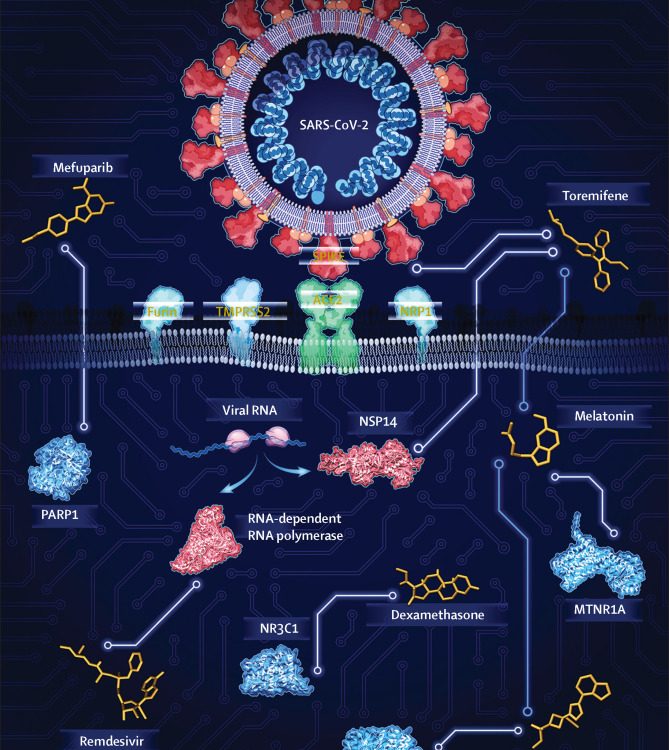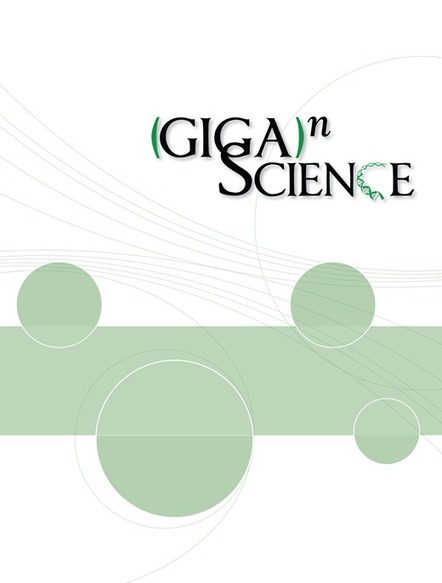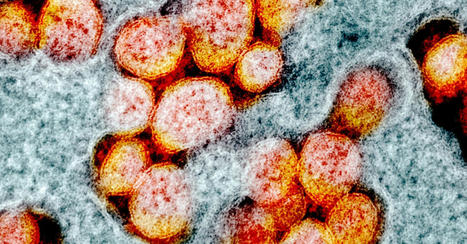Pharmageek
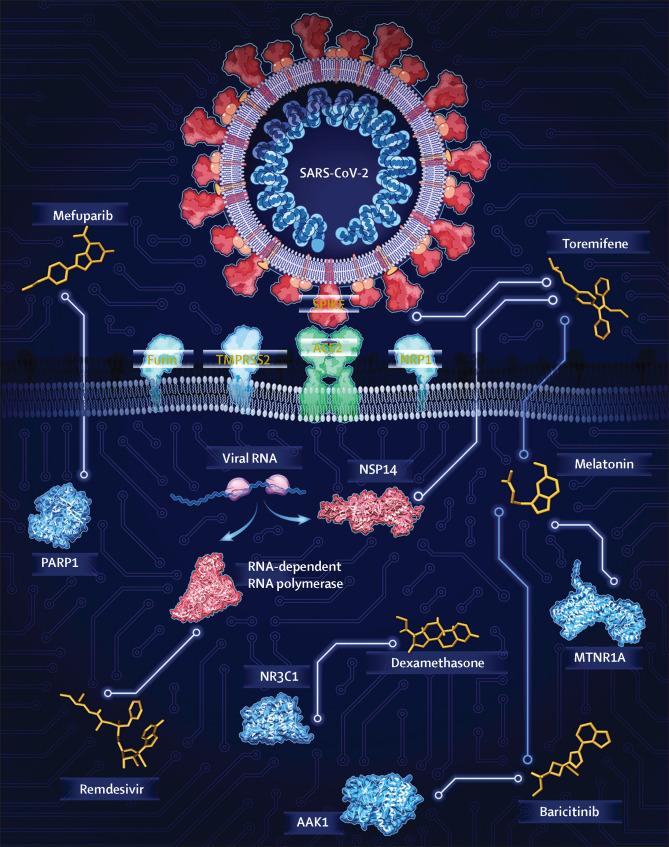
Drug repurposing or repositioning is a technique whereby existing drugs are used to
treat emerging and challenging diseases, including COVID-19. Drug repurposing has
become a promising approach because of the opportunity for reduced development timelines
and overall costs. In the big data era, artificial intelligence (AI) and network medicine
offer cutting-edge application of information science to defining disease, medicine,
therapeutics, and identifying targets with the least error. In this Review, we introduce
guidelines on how to use AI for accelerating drug repurposing or repositioning, for
which AI approaches are not just formidable but are also necessary.
Lire l'article complet sur : www.thelancet.com
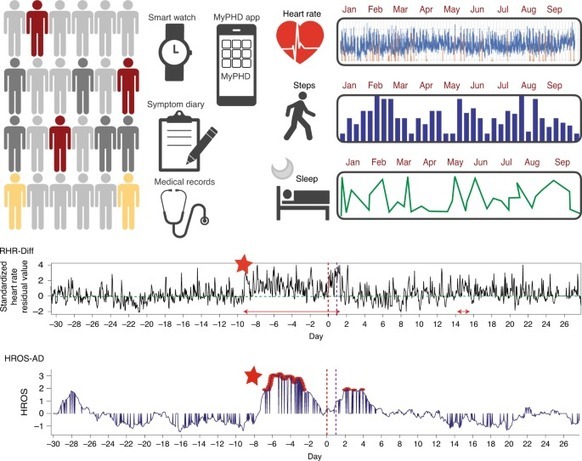
Consumer wearable devices that continuously measure vital signs have been used to monitor the onset of infectious disease. Here, we show that data from consumer smartwatches can be used for the pre-symptomatic detection of coronavirus disease 2019 (COVID-19). We analysed physiological and activity data from 32 individuals infected with COVID-19, identified from a cohort of nearly 5,300 participants, and found that 26 of them (81%) had alterations in their heart rate, number of daily steps or time asleep. Of the 25 cases of COVID-19 with detected physiological alterations for which we had symptom information, 22 were detected before (or at) symptom onset, with four cases detected at least nine days earlier. Using retrospective smartwatch data, we show that 63% of the COVID-19 cases could have been detected before symptom onset in real time via a two-tiered warning system based on the occurrence of extreme elevations in resting heart rate relative to the individual baseline. Our findings suggest that activity tracking and health monitoring via consumer wearable devices may be used for the large-scale, real-time detection of respiratory infections, often pre-symptomatically. Analysis of physiological and activity data from consumer smartwatches enables real-time detection, often before symptom onset, of COVID-19, as well as other respiratory illnesses and stress inducers.
Lire l'article complet sur : www.nature.com
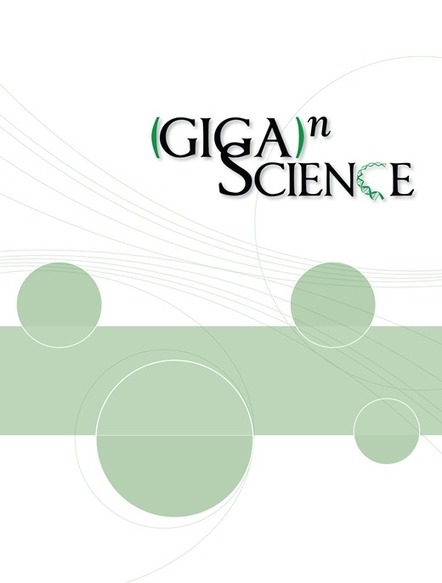
AbstractBackground. Following the miniaturization of integrated circuitry and other computer hardware over the past several decades, DNA sequencing is on a simi
Lire l'article complet sur : academic.oup.com
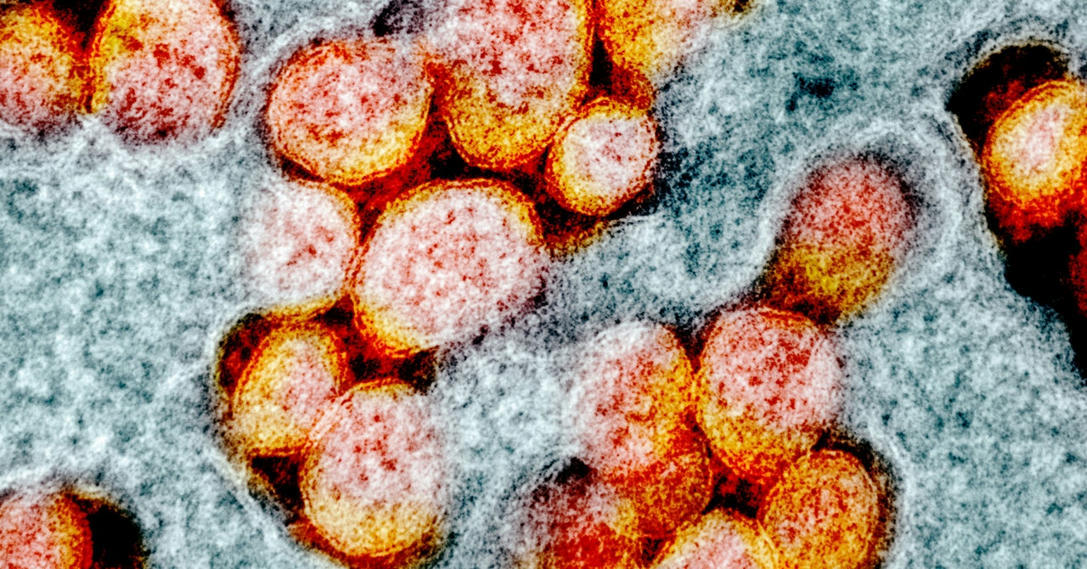
With cases soaring across the globe, the Covid-19 pandemic is nowhere near its end, but with three vaccines reporting trial data and two apparently nearing approval by the US FDA, it may be reaching a pivot point.
In what feels like a moment of drawing breath and taking stock, international researchers are turning their attention from the present back to the start of the pandemic, aiming to untangle its origin and asking what lessons can be learned to keep this from happening again.
Two efforts are happening in parallel. On November 5, the World Health Organization quietly published the rules of engagement for a long-planned and months-delayed mission that creates a multinational team of researchers who will pursue how the virus leaped species. Meanwhile, last week, a commission created by The Lancet and headed by the economist and policy expert Jeffrey Sachs announced the formation of its own international effort, a task force of 12 experts from nine countries who will undertake similar tasks.
Both groups will face the same complex problems. It has been approximately a year since the first cases of a pneumonia of unknown origin appeared in Wuhan, China, and about 11 months since the pneumonia’s cause was identified as a novel coronavirus, probably originating in bats.
The experts will have to retrace a chain of transmission—one or multiple leaps of the virus from the animal world into humans—using interviews, stored biological samples, lab assays, environmental surveys, genomic data, and the thousands of papers published since the pandemic began, all while following a trail that may have gone cold.
The point is not to look for patient zero, the first person infected—or even a hypothetical bat zero, the single animal from which the novel virus jumped.
It’s likely neither of those will ever be found. The goal instead is to elucidate the ecosystem—physical, but also viral—in which the spillover happened and ask what could make it likely to happen again.
Lire l'article complet sur : www.wired.com


